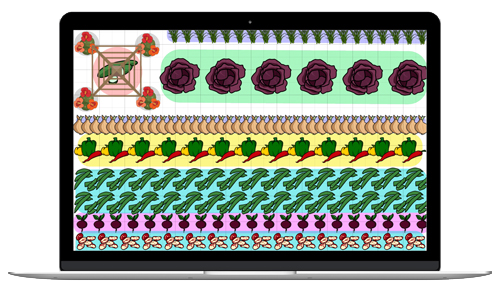
Yellow daffodils, ‘Jetfire’ Narcissus, in flower in early spring
Planting, Growing, and Caring for Daffodils
The Almanac Garden Planner - Use It Free for 7 Days!
Plan your 2025 garden with our award-winning Garden Planner.
According to the American Daffodil Society, there are 13 official daffodil flower types and more than 25,000 named cultivars!
Whatever variety you choose, the most important tip is: Get the best quality bulbs for the best flowers. The bigger the bulbs, the better. Look for top-size bulbs, the biggest bulbs on the market.
- ‘Dutch Master’ is the classic daffodil—big and yellow with a very large cup and oversized trumpets. They bloom early, naturalize easily, and are great for planting in masses.

- ‘Barrett Browning’ is the recognizable pure white daffodil with a bright orange trumpet surrounded by a golden halo. They bloom early, naturalize easily, and do well in warmer climates, too.
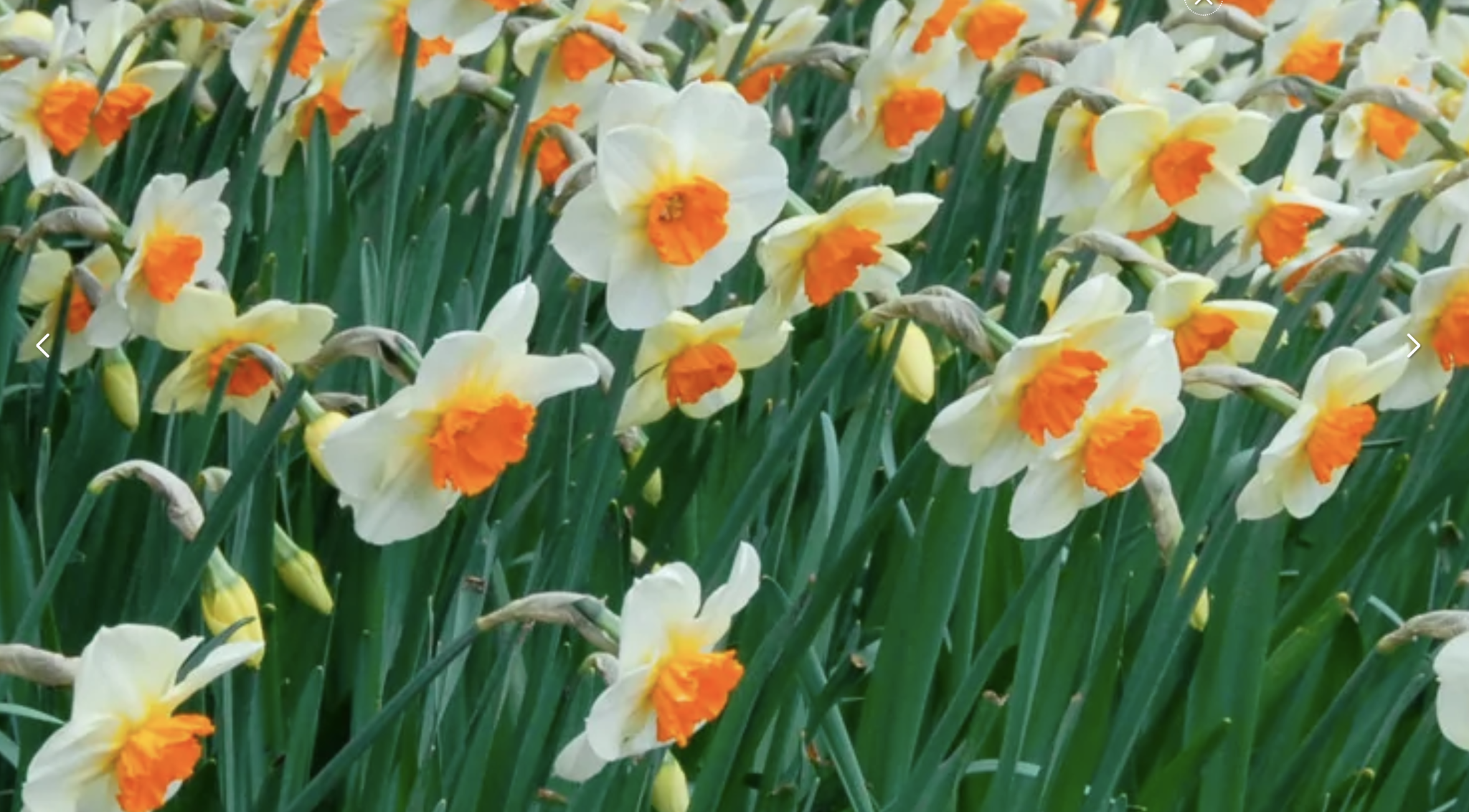
- ’Tahiti’ is a stunner with layers of rounded, golden yellow petals interspersed with frilly, red-orange accents. They bloom mid to late season, last longer, and make an excellent cut flower.
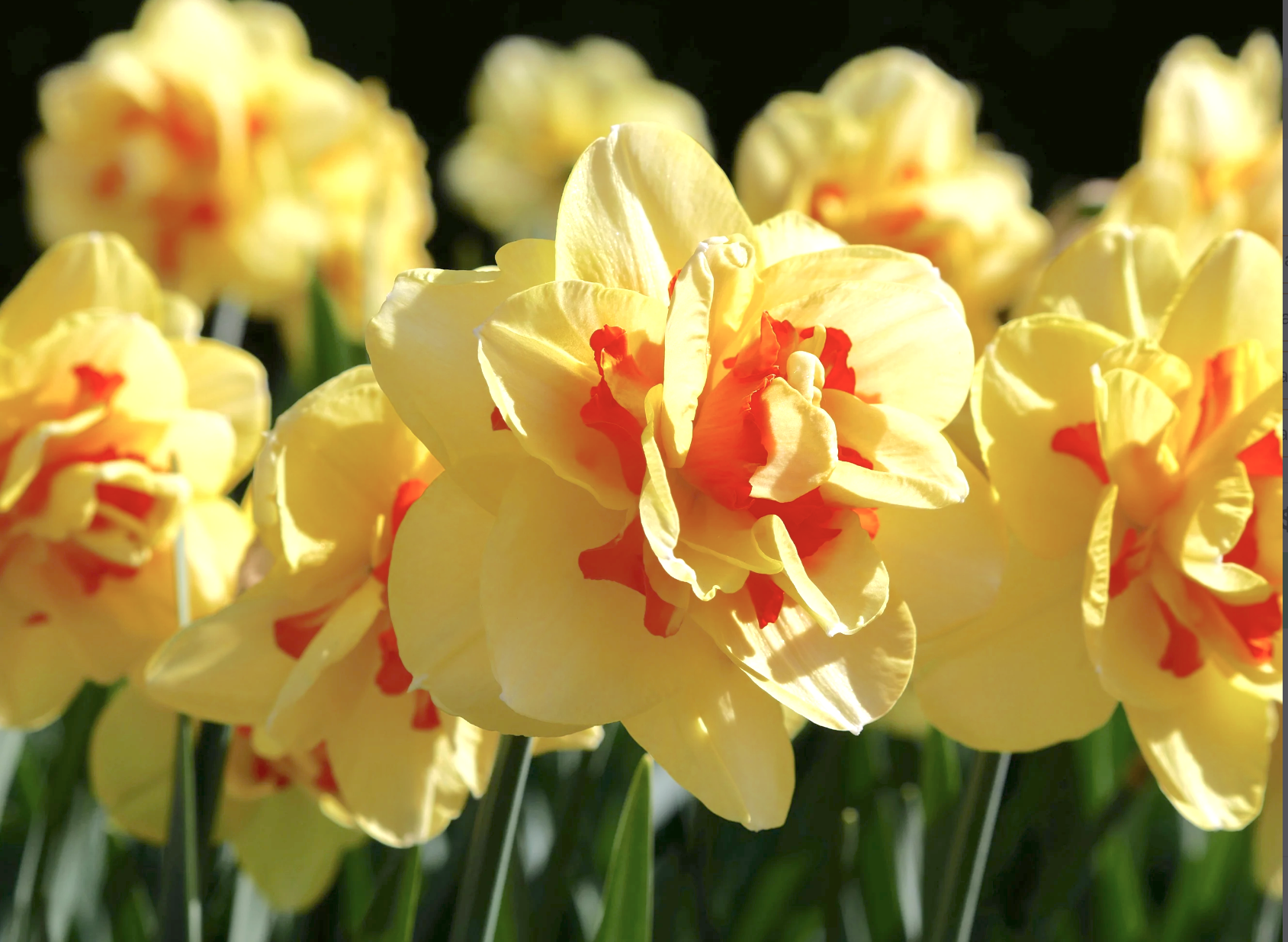
- ‘Tete a Tete’ is an adorable mini daffodil that flowers early and blooms for weeks as one of the most long-blooming varieties. Ideal for flower beds and containers and naturalizes with ease.
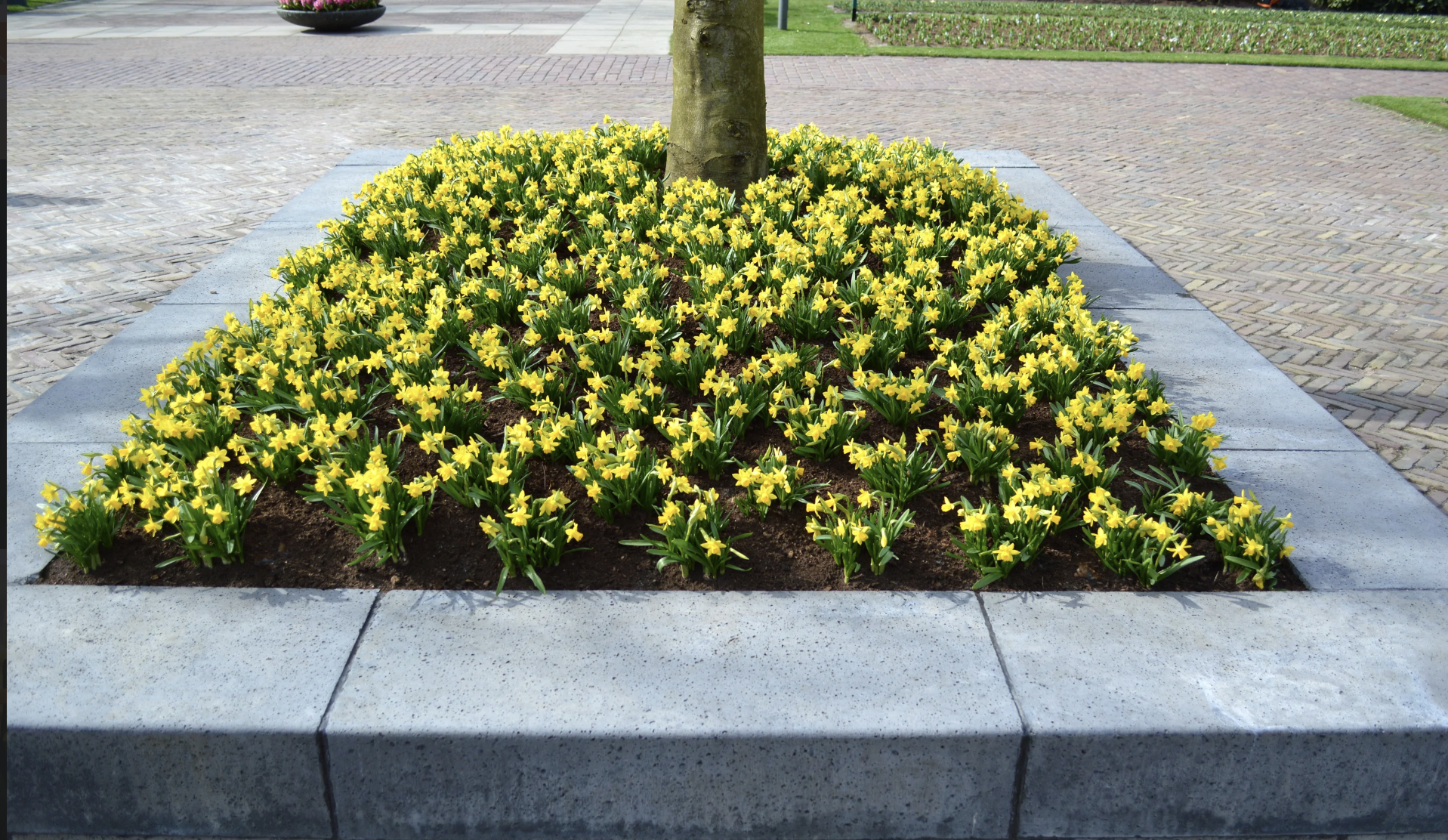
- ‘Jetfire’ is another mini daffodil with bright orange cups and swept-back yellow petals. It blooms in early spring, is very long-lasting, and doesn’t flop over.
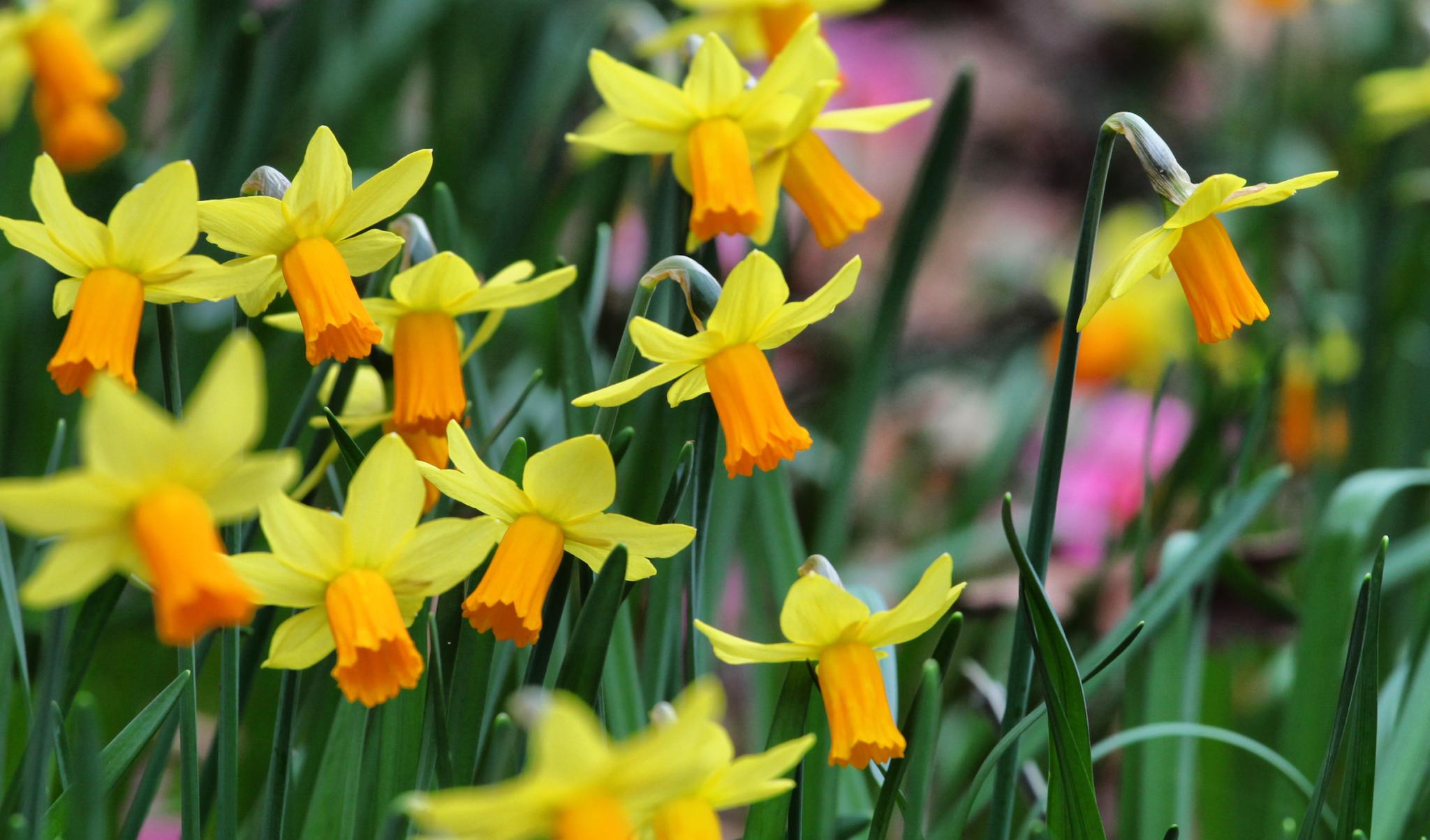
- ‘Petit Four’ is a good choice for a partially shady site. The flower has white petals with a double cup of apricot pink and grows 16 inches tall.
- ‘Cheerfulness’ bears double flowers and multiple blooms per stem; this daffodil is very fragrant with a lovely gardenia-like scent. Blooms in late spring and makes an excellent cut flower.
- ‘Thalia’ is an all-white daffodil, making it wonderful for moon gardens. Learn about 20 pure white flowers to include in your garden.
ADVERTISEMENT
Normally, rodents, bunnies, deer, etc., will avoid daffodils, as the flowers can be toxic. It may be that one animal didn’t know that until biting into a few. According to some sources, deer usually leave a ragged cut when chewing plants. Rabbits can leave a clean cut, usually at a bit of an angle. Groundhogs may also leave a clean cut. Some birds, such as crows, have been known to clip off flowers in general and just leave them on the ground. Look around for signs of fur, feathers, tracks, etc., in case they might give you a clue as to the culprit!
Many of my daffodils are not flowering but their leaves are coming up. I thought this was a sign to separate them. When I dug them up there were many small baby bulbs which separated and will replant. Is not flowering a sign that they need to be separated? If not, what is the problem?
Unfortunately, there is no one problem—or at least no single one we can identify. Daffodils fail to bloom when or if they . . .
• do not get at least a half day of sunlight
• are in an area with poor drainage
• have been fed with a high-nitrogen fertilizer OR have not been fertilized in years (a 5-10-10 mix when planted, when leaves emerge, and at bloom is recommended)
• experienced a heat wave last spring
• have a virus, e.g., yellow stripe (such lines appear in the foliage)
• foliage was removed last season before bulbs could replenish the bulbs; leaving the foliage for six weeks is advised
Those are most of the common reasons. Perhaps one is yours?
I’ve had a lot of what I call blind daffs what’s the best thing to do with them. I usually leave them in the ground. If I dig them up how would one know which is the blind ones. Thank you
Unfortunately, without observing which have bloomed and which haven’t (and labeling them accordingly), it’s not possible to tell them apart. The ones that have bloomed should keep their flowers for a little while after blooming, so keep an eye on them and mark which are which before digging!
We have an abundance of daffodils that are quite lovely. I notice that the bloom, especially as it starts to fade, has somewhat of a bulge under the petals. Can these be planted, and therefore, will I realize more flowers next spring? I live on San Juan Island, WA.
Those are likely the daffodil seed pods. While it’s possible to plant them, they typically take several years to grow into a proper plant and produce blooms. Generally, they’re not worth the trouble of planting, unless you don’t mind waiting!
Its mid-April and my daffodils were all accidentally pulled out and leaves stripped. If I replant now will they come back this spring? Or should
I replant now and just wait till next year?
Daffodil bulbs have roots like most plants so something so disruptive as pulling them out has done them in, certainly for this year. In their best form, daffs use their foliage to help to produce the energy for the next season’s blooms after each season’s flower period. So yours have been compromised. Hard to tell how they will fare going forward but it’s worth the time/trouble to replant them and see what happens next year. To be on the safe side, that is, to have flowers next spring, you might want to buy new bulbs in the fall and plant them then, as usual. Most people think you/we can’t have too many daffodils!
I received a beautiful pot of daffodils as an Easter gift. Can I plant these outside (in Wisconsin) while they’re flowering? Or should I keep them in the post until they die off, then just plant the bulbs in fall?

